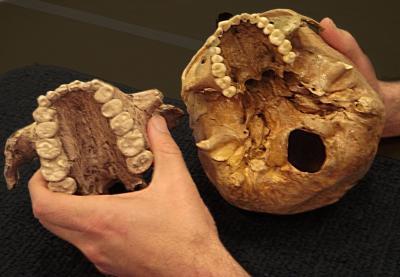Science News
Nutless Nutcracker Man
May 3, 2011

Today’s story has technology, sedges, a Nutcracker Man and no nuts. How can you resist?
For decades, a 2.3 million- to 1.2 million-year-old human relative named Paranthropus boisei has been nicknamed Nutcracker Man, not for his dancing, but rather his big, flat molar teeth and thick, powerful jaw.
Yesterday, University of Utah researchers upset conventional wisdom about early humanity's diet by publishing a study that declares that Nutcracker Man didn't eat nuts at all, but instead chewed grasses and possibly sedges, a bit like a cow.
In fact, Nutcracker Man dined more heavily on grasses and sedges than any other early human or human relative studied to date. According to co-author Kevin Uno, Paranthropus boisei “was not competing for food with most other primates, who ate fruits, leaves and nuts; but with grazers—zebras’ ancestors, suids [ancestors of pigs and warthogs] and hippos.”
Here comes the technology part: the team determined the extinct, upright-walking Paranthropus boisei's diet by analyzing carbon isotope ratios in the tooth enamel of 24 teeth from 22 individuals who lived between 1.4 million and 1.9 million years ago.
The scientists used a drill to pulverize some tooth enamel into powder, but only 2 milligrams per tooth and only from the surface of broken teeth, leaving the original surfaces intact for future study. Still, there was more than a little anxiety among officials at the National Museums of Kenya, where the teeth are housed.
“The sound of the drill may make a lot of paleontologists and museum staff cringe, but as the results of this study show, it provides new information that we can't get at any other way,” Uno says. “And we've gotten very good at drilling.”
So good, in fact, Discover’s 80beats says the team won’t stop there.
This study calls into question the nut-eating habits of the genus Australopithecus too, so now researchers want to use the same technique to see if the isotopes measure up.
Image by Melissa Lutz Blouin, University of Arkansas